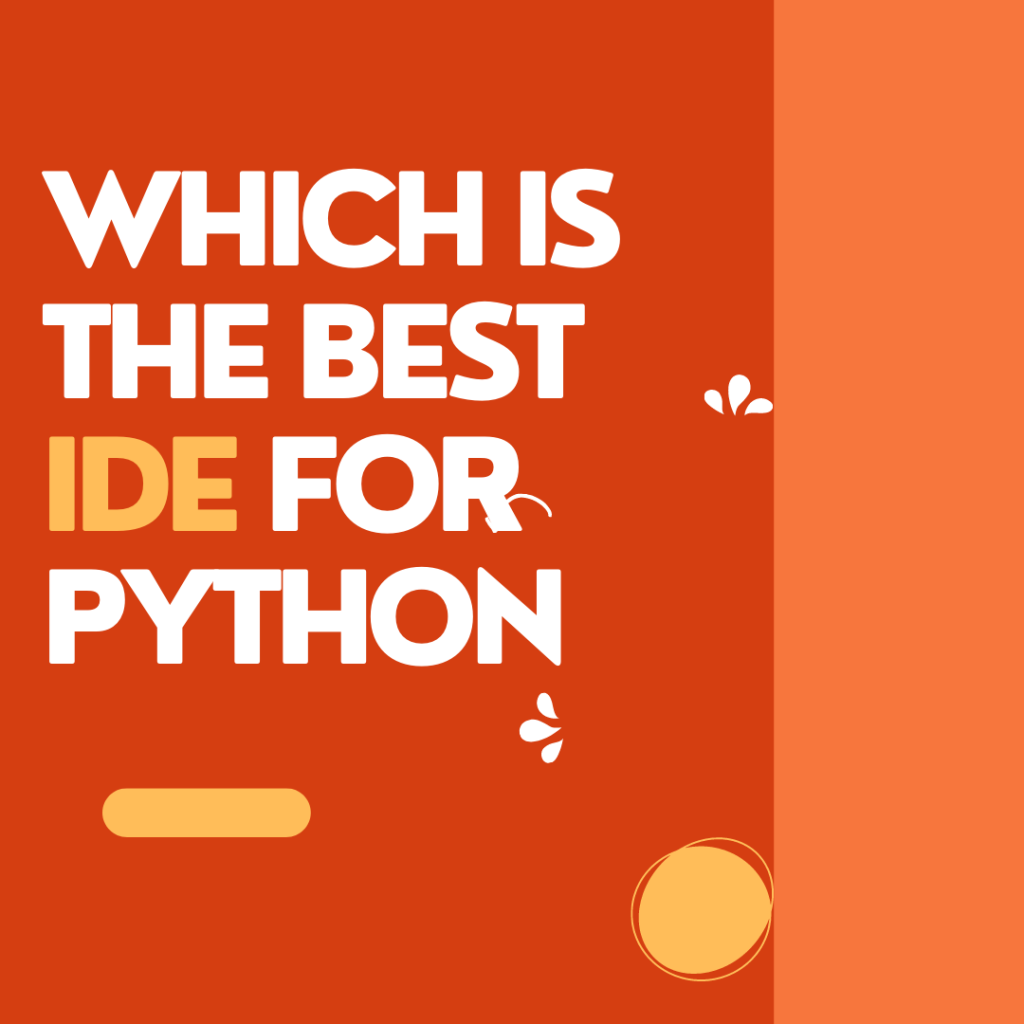Python has become one of the most popular programming languages due to its simplicity, readability, and extensive libraries. As a Python developer, choosing the right Integrated Development Environment (IDE) is crucial for efficient coding, debugging, and overall productivity. With a plethora of IDE options available, selecting the best one can be a daunting task. In this blog, we will explore some of the top IDEs for Python development, highlighting their features, advantages, and suitability for different types of developers.

- PyCharm:
PyCharm, developed by JetBrains, is one of the most powerful and widely used IDEs for Python development. It offers a plethora of features, including intelligent code completion, code inspections, integrated version control, and advanced debugging capabilities. PyCharm also supports web development frameworks like Django and Flask, making it an excellent choice for web developers working with Python.
Pros:
- Robust code analysis and error detection
- Extensive library and framework support
- Smooth integration with popular version control systems
- Excellent debugging and testing features
Cons:
- Heavier on system resources compared to other IDEs
- Some advanced features are available only in the paid version (PyCharm Professional)
- Visual Studio Code (VS Code):
Although not a dedicated Python IDE, Visual Studio Code has gained immense popularity among developers of various languages, including Python. It offers a lightweight and customizable environment with a vast ecosystem of extensions that cater to different Python development needs. With the right extensions, VS Code can transform into a feature-rich Python IDE.
Pros:
- Lightweight and fast performance
- Rich extension marketplace for Python support
- Versatile and customizable for various programming languages
- Built-in debugging and integrated terminal
Cons:
- Some advanced Python features may require extensions
- May require additional configuration for optimal Python development
- Jupyter Notebook:
Jupyter Notebook is a unique interactive computing environment that allows Python developers to create and share documents containing live code, visualizations, and explanatory text. It is widely used for data analysis, machine learning, and scientific computing. Jupyter’s support for Markdown and interactive code execution makes it a powerful tool for exploratory programming.
Pros:
- Interactive and visually appealing interface
- Ideal for data analysis and data visualization tasks
- Supports multiple programming languages (not limited to Python)
- Enables sharing of code and results in a single document
Cons:
- Not suitable for large-scale software development
- Lacks advanced code navigation and refactoring features
- IDLE:
IDLE (Integrated Development and Learning Environment) comes bundled with the Python installation and serves as a basic IDE for beginners and casual Python users. It provides essential features such as syntax highlighting, code execution, and debugging, making it a straightforward option for simple Python programming tasks.
Pros:
- Lightweight and easy to use
- Included with Python distribution, no separate installation required
- Ideal for beginners and learning purposes
Cons:
- Limited features compared to other dedicated IDEs
- Not suitable for professional or complex projects
Conclusion:
Choosing the best IDE for Python development depends on your specific needs and preferences. For professional developers working on large projects, PyCharm stands out with its comprehensive features and excellent support for web frameworks. On the other hand, if you prefer a lightweight and highly customizable IDE, Visual Studio Code can be an excellent choice with its vast extension ecosystem. For data scientists and researchers, Jupyter Notebook offers an interactive and visually appealing environment for data analysis and exploration.
Ultimately, the best IDE for Python is one that aligns with your development workflow, enhances productivity, and provides the necessary features for your project requirements. I recommend trying out different IDEs to see which one suits your coding style and development goals the best. Happy coding!